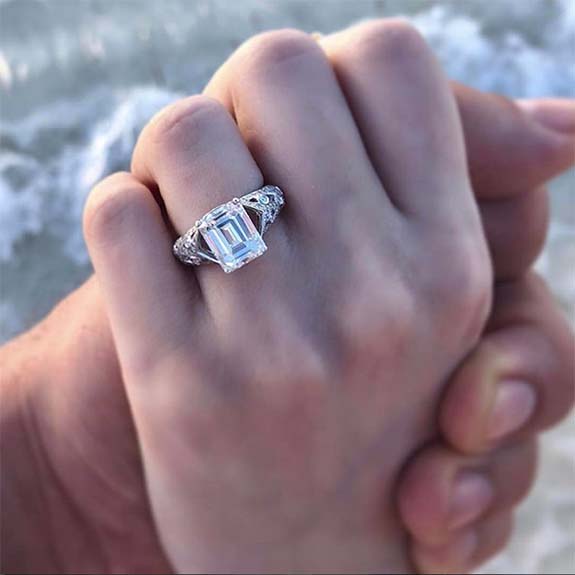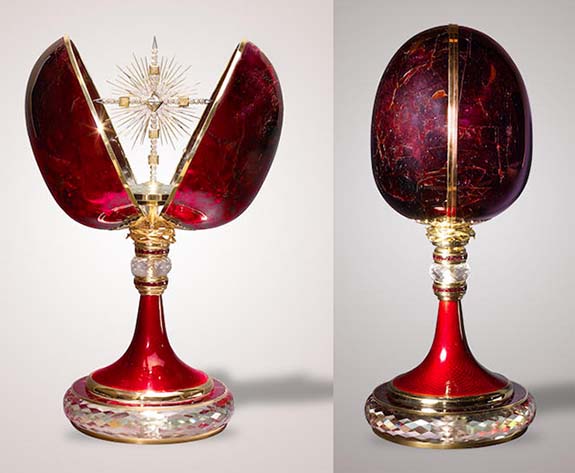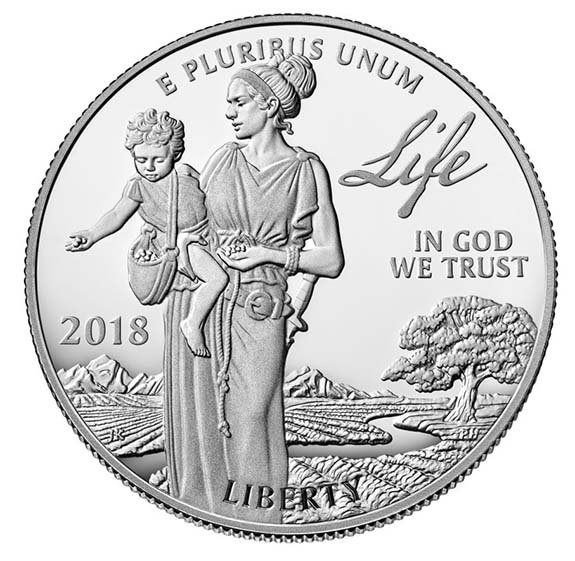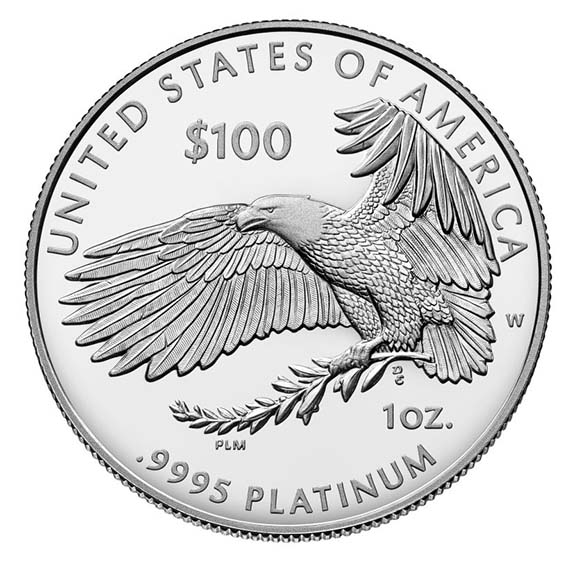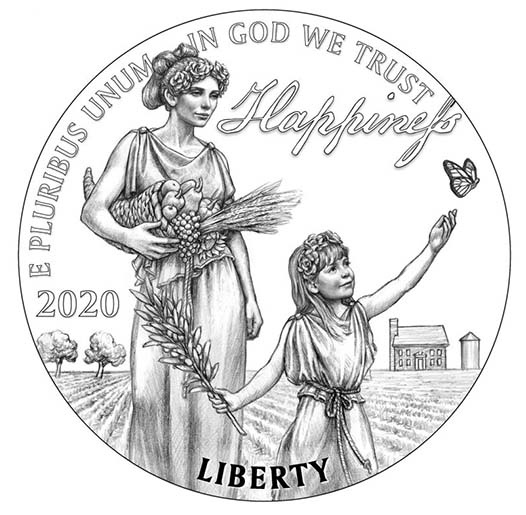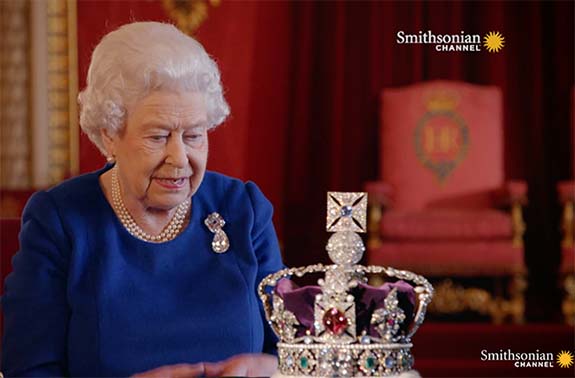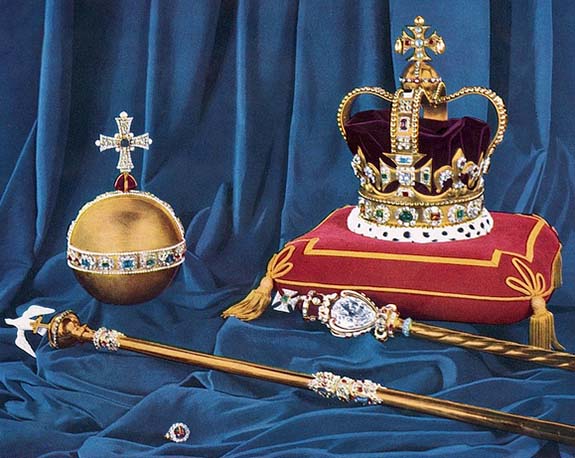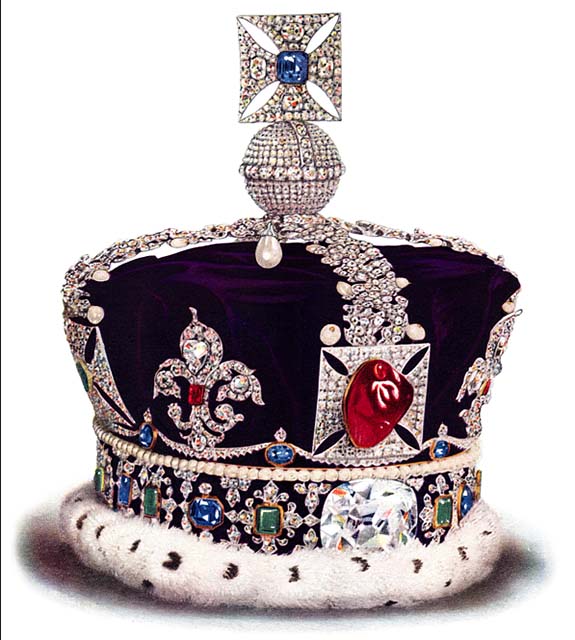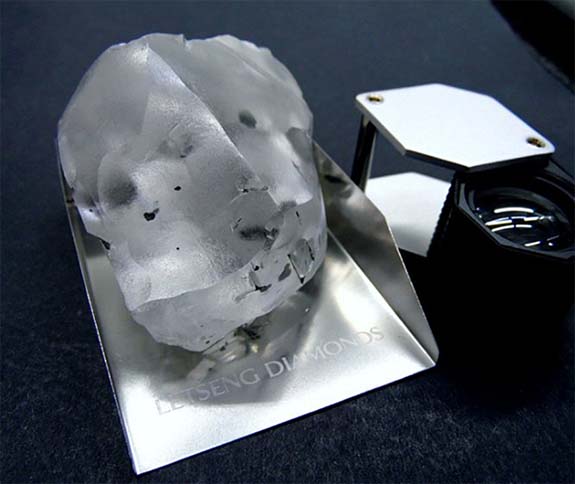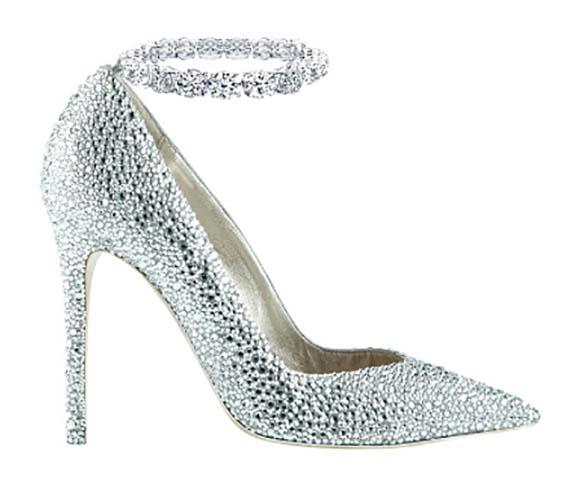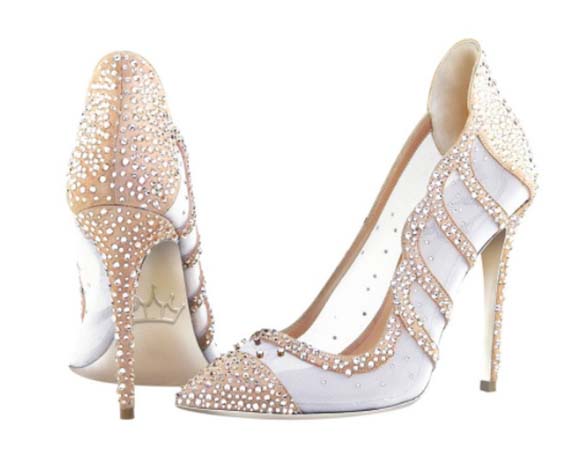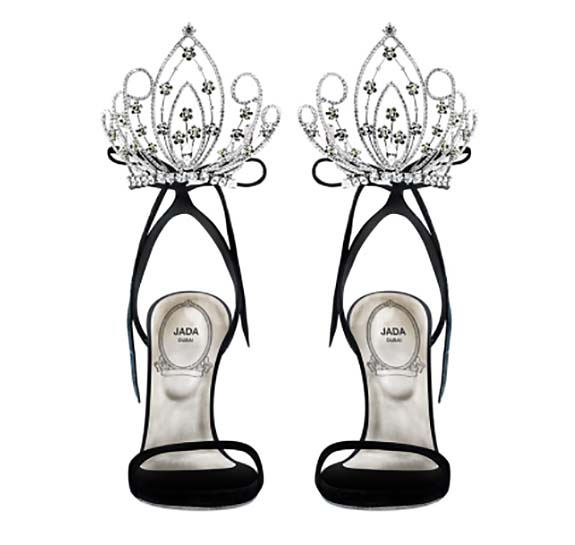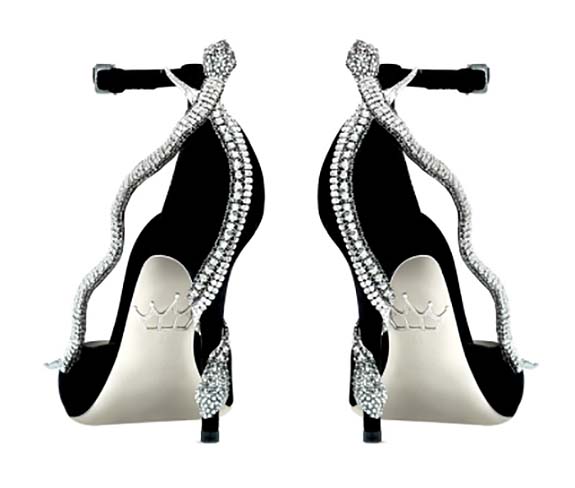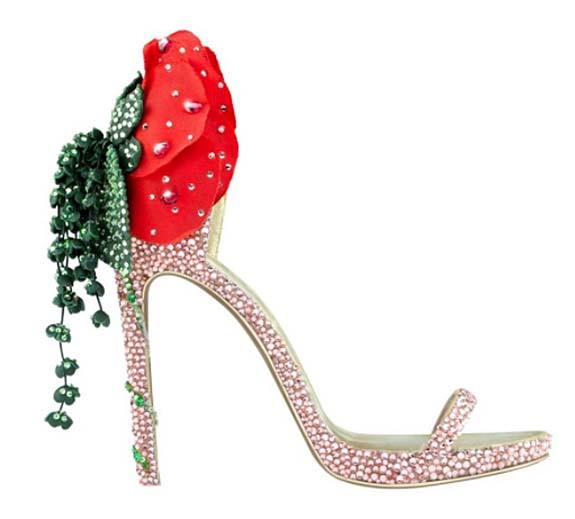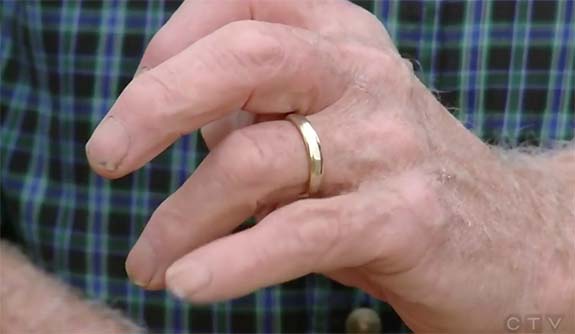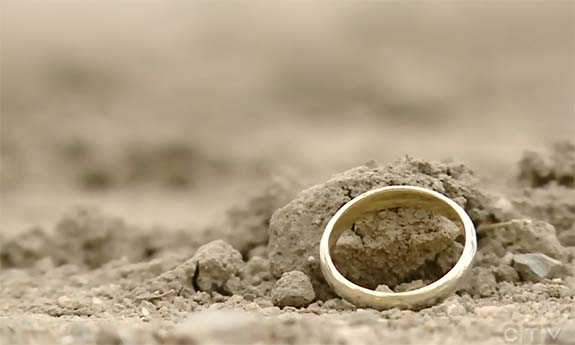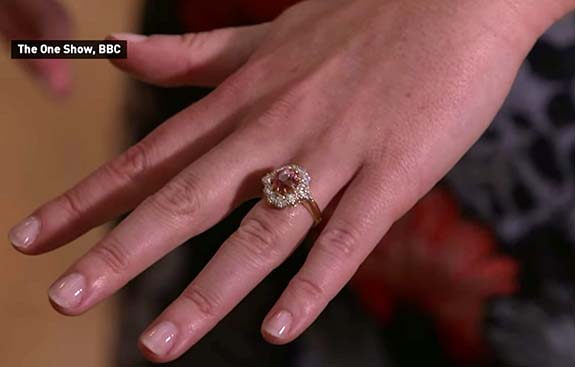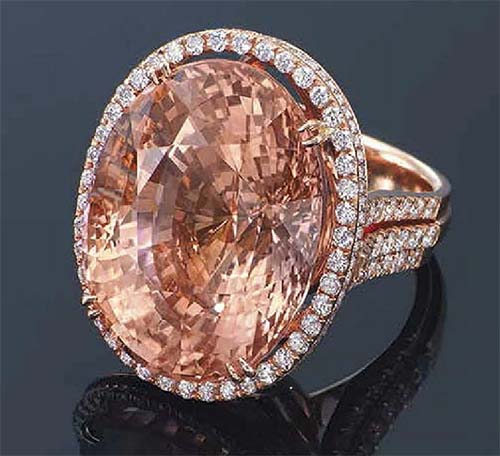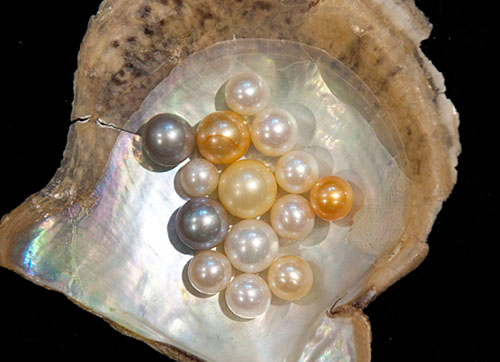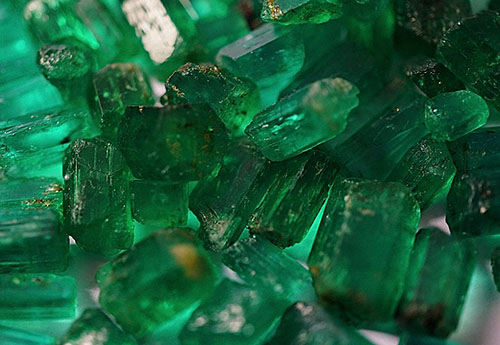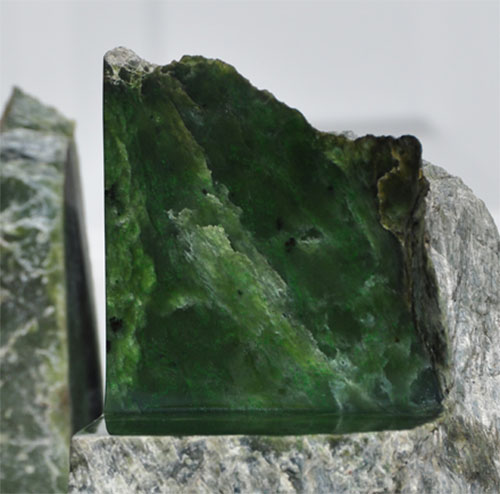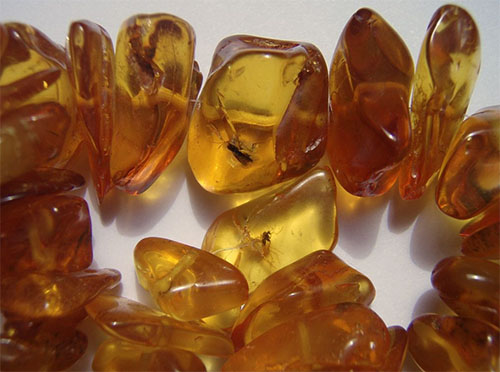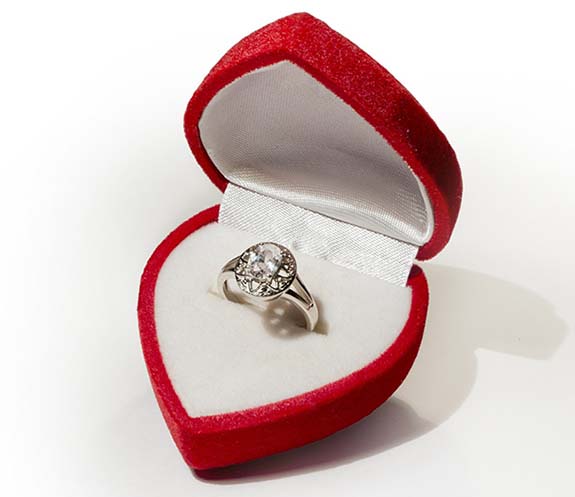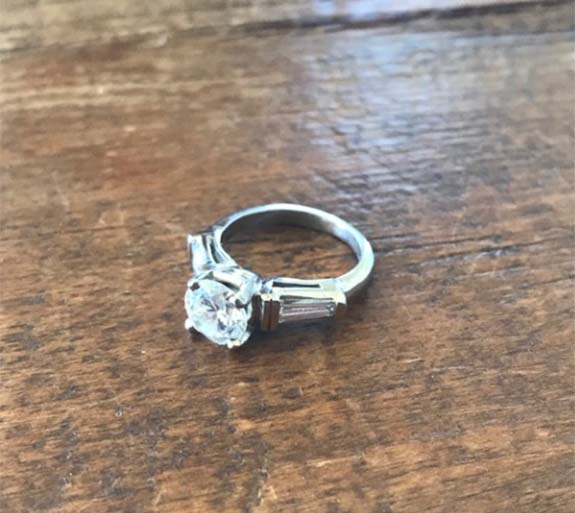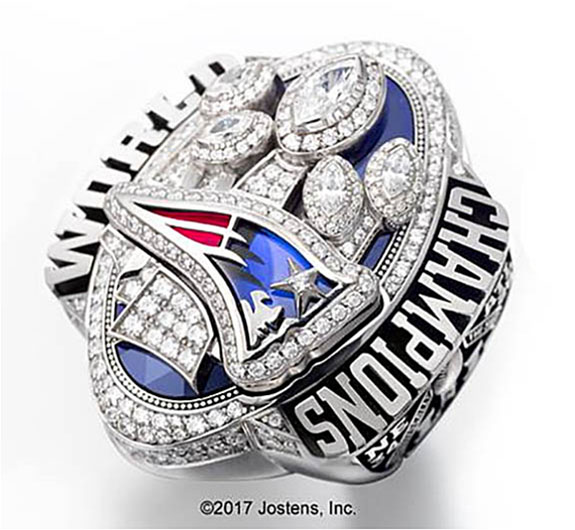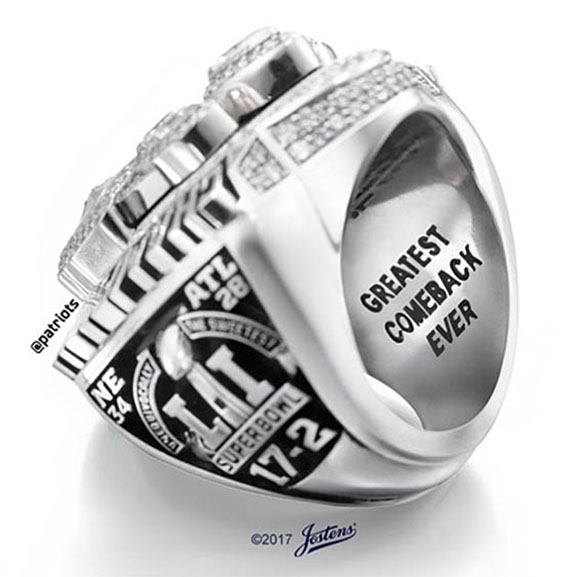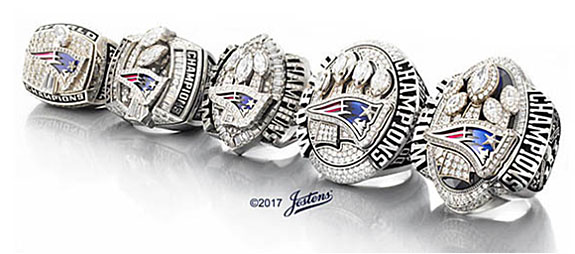January 2nd, 2018
With the new year upon us and the Winter Olympics in South Korea right around the corner, it's time to take a close look at the medals that will be awarded at the Games and noodle out what they're really worth.
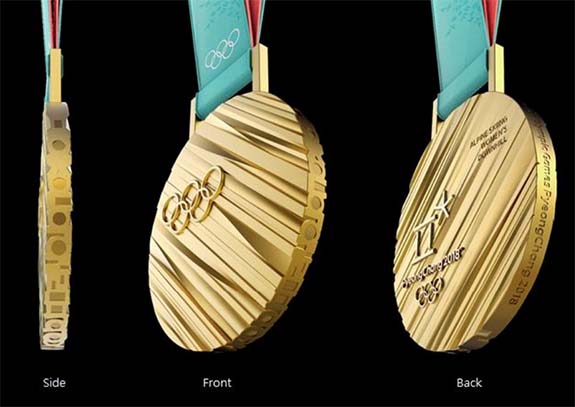
Designed by Seoul-based Sukwoo Lee, the gold, silver and bronze medals to be awarded from February 9 - 25 at the XXIII Olympic Winter Games in Pyeongchang will range in weight from 586 grams for a gold medal to 493 grams for a bronze medal. At today's spot price, the gold medals — if they were, in fact, made of pure gold — would be worth $26,974 each.
The truth is that the gold medals contain just 6 grams of pure gold and 580 grams of 99.9% silver, resulting in an actual precious metal value of about $624. The silver medals contain 580 grams of 99.9% silver ($348), and the bronze medals are made of 493 grams of copper ($4.93).
Yes, there was a time when Olympic gold medals were made of solid gold, but the last ones were awarded in Stockholm, Sweden, way back in 1912.
Starting in 1916, the International Olympic Committee mandated that gold medals be made mostly of silver, and gilded with exactly 6 grams (0.211 ounces) of 24-karat gold. The IOC also required the medals to be at least 60mm in diameter and 3mm thick. The Pyeongchang medals are 92.5mm (about 3.6 inches) wide. The thickness of the coins range from 4.4mm to 9.42mm.
Lee's design was inspired by the texture of tree trunks, with the front bearing the Olympic rings and dynamic diagonal lines that reflect both the history of the Olympics and the determination of the participants. The reverse displays the winner's sports discipline, event and the Pyeongchang 2018 emblem. In total, 259 sets of the medals have been made.
The bark-like ridges on the face of Lee's design are made from extrusions of three-dimensional Hangeul consonants. Hangeul, which dates back to the 15th century, is the Korean alphabet and the foundation of Korean culture. The Hangeul letters extend to the edges of the coins and can be read around the rims.
The ribbons are made from gapsa, a traditional South Korean fabric. They are light teal and light red in color and embroidered with Hangeul patterns and other designs.
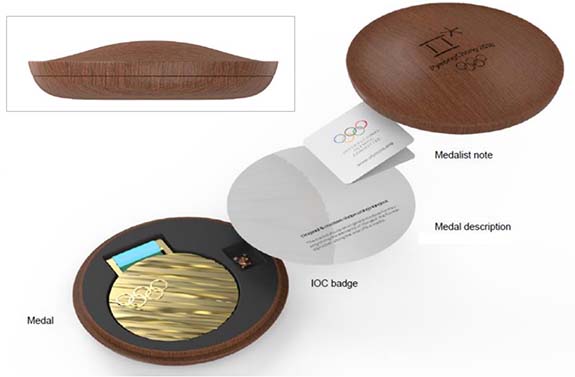
The medal comes with a wooden case designed with curves witnessed in Korean traditional architecture. The case will house the medal, medal description, the IOC badge and a medallist note.
The Winter Games in Pyeongchang will be followed by the Tokyo 2020 Summer Olympics. Although the medal designs have yet to be revealed, the organizers are imploring environmentally conscious citizens to unload their old cell phones in a recycling effort to amass enough precious metal to create 5,000 gold, silver and bronze medals.
Credits: Images via pyeongchang2018.com.

Designed by Seoul-based Sukwoo Lee, the gold, silver and bronze medals to be awarded from February 9 - 25 at the XXIII Olympic Winter Games in Pyeongchang will range in weight from 586 grams for a gold medal to 493 grams for a bronze medal. At today's spot price, the gold medals — if they were, in fact, made of pure gold — would be worth $26,974 each.
The truth is that the gold medals contain just 6 grams of pure gold and 580 grams of 99.9% silver, resulting in an actual precious metal value of about $624. The silver medals contain 580 grams of 99.9% silver ($348), and the bronze medals are made of 493 grams of copper ($4.93).
Yes, there was a time when Olympic gold medals were made of solid gold, but the last ones were awarded in Stockholm, Sweden, way back in 1912.
Starting in 1916, the International Olympic Committee mandated that gold medals be made mostly of silver, and gilded with exactly 6 grams (0.211 ounces) of 24-karat gold. The IOC also required the medals to be at least 60mm in diameter and 3mm thick. The Pyeongchang medals are 92.5mm (about 3.6 inches) wide. The thickness of the coins range from 4.4mm to 9.42mm.
Lee's design was inspired by the texture of tree trunks, with the front bearing the Olympic rings and dynamic diagonal lines that reflect both the history of the Olympics and the determination of the participants. The reverse displays the winner's sports discipline, event and the Pyeongchang 2018 emblem. In total, 259 sets of the medals have been made.
The bark-like ridges on the face of Lee's design are made from extrusions of three-dimensional Hangeul consonants. Hangeul, which dates back to the 15th century, is the Korean alphabet and the foundation of Korean culture. The Hangeul letters extend to the edges of the coins and can be read around the rims.
The ribbons are made from gapsa, a traditional South Korean fabric. They are light teal and light red in color and embroidered with Hangeul patterns and other designs.

The medal comes with a wooden case designed with curves witnessed in Korean traditional architecture. The case will house the medal, medal description, the IOC badge and a medallist note.
The Winter Games in Pyeongchang will be followed by the Tokyo 2020 Summer Olympics. Although the medal designs have yet to be revealed, the organizers are imploring environmentally conscious citizens to unload their old cell phones in a recycling effort to amass enough precious metal to create 5,000 gold, silver and bronze medals.
Credits: Images via pyeongchang2018.com.




